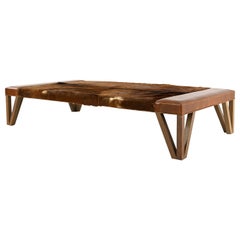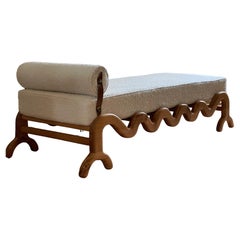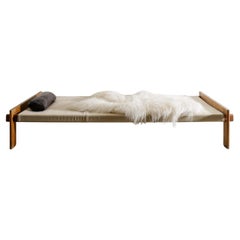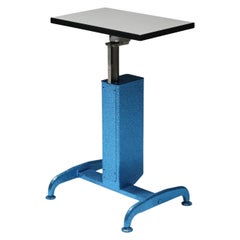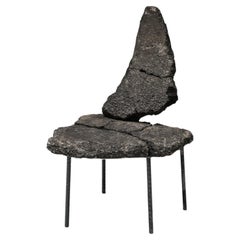Lionel Jadot Furniture
Lionel Jadot is as much an inventor as he is a designer. The Brussels-based furniture maker and tinkerer defies categorization with a body of work linked only by the use of repurposed materials. His one-of-a-kind chairs, statement-making tables and eclectic lamps overflow with personality and charm. Jadot is also an interior architect known for creating energetic spaces with a retro yet futuristic feel.
Jadot comes from a long line of custom furniture designers and was born in Belgium in an apartment above a design studio. As a child, he would walk through the family workshop every day after school, picking up the scrap material to experiment with in his room. He took over the family business when he was just 18, and the self-taught Jadot reveled in the freedom to create whatever designs he wanted.
At his eponymous atelier, Jadot works on projects for private homes as well as restaurants, bars and hotels. While his designs and interiors can look chaotic at first glance — with his stone chairs and imposing Organic Modern-style tables of marble and wood — the disparate elements come together in a harmonious balance underpinned by quality and craftsmanship.
In 2019, Jadot also established Zaventem Ateliers in the village of Zaventem outside of Brussels. The former industrial space has become a hub for a community of established and emerging designers and artists.
Jadot's creations are regularly exhibited at design fairs and events in Brussels and around Europe. In 2020, his Crushed Seat (2018) was presented by Todd Merrill Studio director Dallas Dunn at the Brussels Collectible Design Fair. His work was once again exhibited at the Collectible Design Fair 2021 with Antwerp-based Everyday Gallery. Jadot has also expanded into Milan, Italy, with a project called Baranzate Ateliers, which enjoyed a strong showing at Milan Design Week 2022.
On 1stDibs, find Lionel Jadot seating, tables, lighting and more.
2010s Belgian Post-Modern Lionel Jadot Furniture
Cowhide, Leather, Oak
2010s British Mid-Century Modern Lionel Jadot Furniture
Bouclé, Oak
1950s Danish Scandinavian Modern Vintage Lionel Jadot Furniture
Leather, Canvas, Oak
Late 20th Century Lionel Jadot Furniture
Leather, Oak
Mid-20th Century Danish Scandinavian Modern Lionel Jadot Furniture
Fabric, Cane, Oak
Early 2000s American Mid-Century Modern Lionel Jadot Furniture
Leather, Wood, Walnut
1920s Art Deco Vintage Lionel Jadot Furniture
Leather, Oak
2010s Mexican Minimalist Lionel Jadot Furniture
Wool, Oak
1960s German Mid-Century Modern Vintage Lionel Jadot Furniture
Steel, Chrome
2010s Italian Modern Lionel Jadot Furniture
Leather, Wood
21st Century and Contemporary British Modern Lionel Jadot Furniture
Oak
1980s Vintage Lionel Jadot Furniture
Travertine
2010s Lionel Jadot Furniture
Chrome
2010s Belgian Organic Modern Lionel Jadot Furniture
Metal
2010s Belgian Organic Modern Lionel Jadot Furniture
Metal
2010s Belgian Post-Modern Lionel Jadot Furniture
Copper
2010s Belgian International Style Lionel Jadot Furniture
Metal
2010s European Lionel Jadot Furniture
Leather, Plaster
2010s European Lionel Jadot Furniture
Brass, Steel
2010s Belgian Futurist Lionel Jadot Furniture
Brass, Steel
2010s Belgian Post-Modern Lionel Jadot Furniture
Brass
2010s Belgian Lionel Jadot Furniture
Metal, Brass
2010s Belgian Post-Modern Lionel Jadot Furniture
Other
2010s Belgian Post-Modern Lionel Jadot Furniture
Steel
2010s Belgian Post-Modern Lionel Jadot Furniture
Stone, Aluminum
